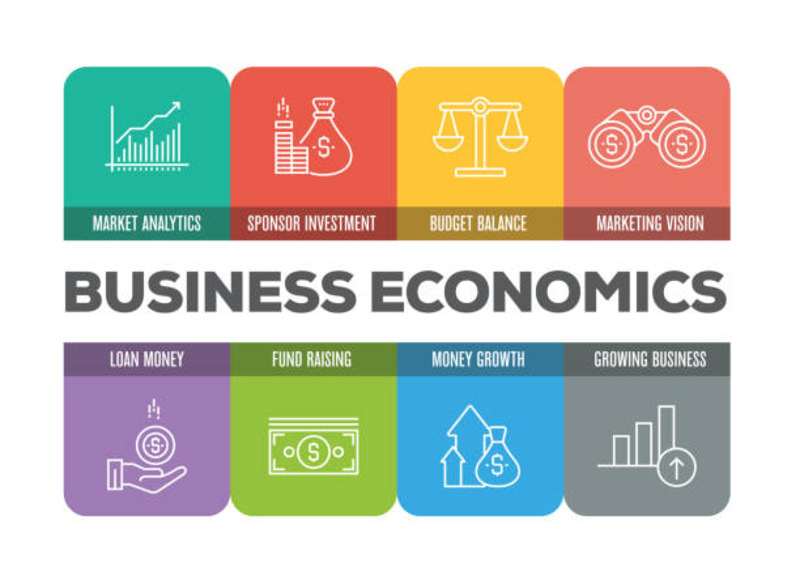
Guide To Fixed Income Investing.
Nov 04, 2023 By Susan Kelly
Are you looking for a way to diversify your investment portfolio? Fixed income investing can often be an attractive option, as it offers generally smaller but steady returns that are much less vulnerable to market fluctuations. With proper planning and adequate knowledge, fixed income investments can help you reach long-term financial goals such as retirement or building wealth incrementally. In this blog post, I'll provide an overview of the basics of fixed income investments — what they are, how they work and how to get started — so you'll know all the key points before starting a successful journey into the world of fixed income investing.
What is Fixed Income Investing and Why Should You Consider It?
Fixed income investing refers to investing in securities that provide a fixed rate of return, such as bonds or certificates of deposit. Unlike investing in stocks, which can be highly volatile and unpredictable, fixed income investing offers a more stable and reliable return on investment. This can be particularly appealing to those who are looking for a more conservative investment strategy. By diversifying your portfolio with fixed income investments, you can help reduce overall risk and minimize the impact of market fluctuations. Additionally, fixed income investments may provide a steady stream of income, making them an attractive option for those who are planning for retirement or looking to supplement their income. Overall, fixed income investing can be a valuable addition to any investment strategy, providing stability, reliability, and potentially significant long-term returns.
Types of Fixed-Income Investments:
Fixed-income investments refer to a class of securities that pay a fixed return, typically in the form of interest or dividends, to investors. These investments can be an attractive option for investors looking for stable and predictable returns, as they are often less volatile than other asset classes such as stocks. There are several different types of fixed-income investments available, including:
- Bonds
- CDs
- Treasuries
- Money market funds.
Each comes with its own set of advantages and potential risks, making it important for investors to weigh their options carefully and make informed decisions. Whether you are a seasoned investor or a beginner, understanding the different types of fixed-income investments can help you build a diversified portfolio and pursue your financial goals with confidence.
Benefits of Investing in Fixed-Income Assets:

Investing in fixed-income assets can offer a plethora of benefits for investors seeking consistent returns with a lower degree of risk.
- Fixed-income assets include bonds, certificates of deposit, and treasury bills, and they are known for providing predictable cash flow and stable yields.
- Compared to unpredictable and volatile stock markets, fixed-income investments can provide peace of mind for those looking for a more secure way to grow their wealth.
- They are also a great way to diversify one's portfolio, as they have a low correlation with equity markets. Fixed-income assets provide a hedge against inflation, ensuring that investors' purchasing power remains safeguarded over time.
- Overall, investing in fixed-income assets can offer a reliable source of income, while also protecting against market fluctuations and inflation - making it a smart choice for any investor looking to build long-term wealth.
Risks Involved with Fixed-Income Investing:

Fixed-income investing can offer a stable source of income for investors seeking a reliable return on their investment. However, as with any investment, there are risks that should be considered.
- One of the main risks with fixed-income investing is interest rate risk. When interest rates rise, bond values typically fall, which can result in a decrease in the value of a fixed-income investment.
- Credit risk and inflation risk are other potential drawbacks to fixed-income investing.
While these risks should not deter investors from considering fixed-income investments, it is important to be aware of the risks and to carefully consider your investment goals and risk tolerance. Seeking the guidance of a financial professional can also help you navigate the risks and benefits of fixed-income investing.
Strategies for Managing Risk with Fixed-Income Assets:
As an investor, one of the primary concerns when dealing with fixed-income assets is managing the associated risks. There are several strategies that can help mitigate risks and maximize returns.
- One approach is diversification, where you spread your investments across different fixed-income assets, such as bonds and municipal securities. This helps to minimize the impact of any negative events affecting a single asset class.
- Another strategy is to choose securities with varying maturities, as longer-term bonds are typically more sensitive to interest rate changes than short-term bonds.
- Bond laddering is also a useful technique where you allocate your investments across bonds with different maturities.
By using these strategies, you can help to manage risk and increase your chances of a successful investment in fixed-income assets.
Reaping the Rewards of Fixed-Income Investing:
For investors looking for stability and predictability in their portfolio, fixed-income investments are a reliable option. Fixed-income investments generate a steady stream of income and provide less risk as compared to other forms of investments. By investing in bonds, CDs, and other fixed-income options, investors can reap the rewards of steady cash flow, consistent interest payments, and a greater degree of predictability when it comes to returns.
Despite fluctuations in the market, fixed-income investments have historically performed well, which means that investors can count on them to provide a reliable source of income year after year. By pursuing fixed-income investing, investors have the opportunity to build a well-rounded portfolio and achieve their financial goals with less risk.
Conclusion:
Fixed-income investing can provide a stable source of returns over time, offering investors the opportunity to grow their wealth with minimal effort. Whether you’re looking for steady income or long-term growth potential, fixed-income investing offers advantages that make it an attractive choice. As with any type of investment, there are risks involved and strategies need to be developed for managing them effectively.
FAQs:
What are the main types of fixed-income investments?
Fixed-income investments include several types of assets such as bonds, certificate of deposits (CDs), treasuries, and money market funds. Each of these investment types offers different levels of risk and return, making them suitable for different investor profiles.
What are the potential benefits of investing in fixed-income assets?
The primary benefit of fixed-income investments is the delivery of a regular and stable income stream. These assets are generally less volatile than equities, providing a more stable return. Additionally, they offer diversification, as these securities have low correlation with equity markets, and can act as a hedge against inflation.
How can investors manage the risks associated with fixed-income assets?
There are several strategies for managing risks in fixed-income investing. Diversification, or spreading investments across different types of fixed-income assets, can help to mitigate some risks. Choosing securities with varying maturities and employing techniques like bond laddering can also help manage risk effectively.
-
 Investment Feb 06, 2024
Investment Feb 06, 2024Best School Districts for Homebuyers: Where Affordability Meets Quality Education
Discover top school districts with affordable homes. Our guide assists families in finding the perfect community.
-
 Investment Dec 21, 2023
Investment Dec 21, 2023What Is The Nasdaq 100 Index?
Learn the Nasdaq 100 Index and how to invest in it. In this guide, we explain the index's components, its differences from the S and P 500, and frequently asked questions about investing in it.
-
 Banking Jan 09, 2024
Banking Jan 09, 2024Understanding Form 8396: An Essential Guide to Mortgage Interest Credit
This detailed guide offers essential information on Form 8396, helping homeowners navigate the Mortgage Interest Credit and make home ownership more affordable.
-
 Investment Feb 16, 2024
Investment Feb 16, 2024Navigating the Realm of Online Brokers: Make an Informed Choice
This provides comprehensive insights on choosing the best online broker for individual investment needs, taking into consideration factors such as types of brokers, associated fees, trading platforms and tools, assets offered, customer service levels, and ratings and reviews. It serves as a guide to aid investors in making informed decisions for their financial future.